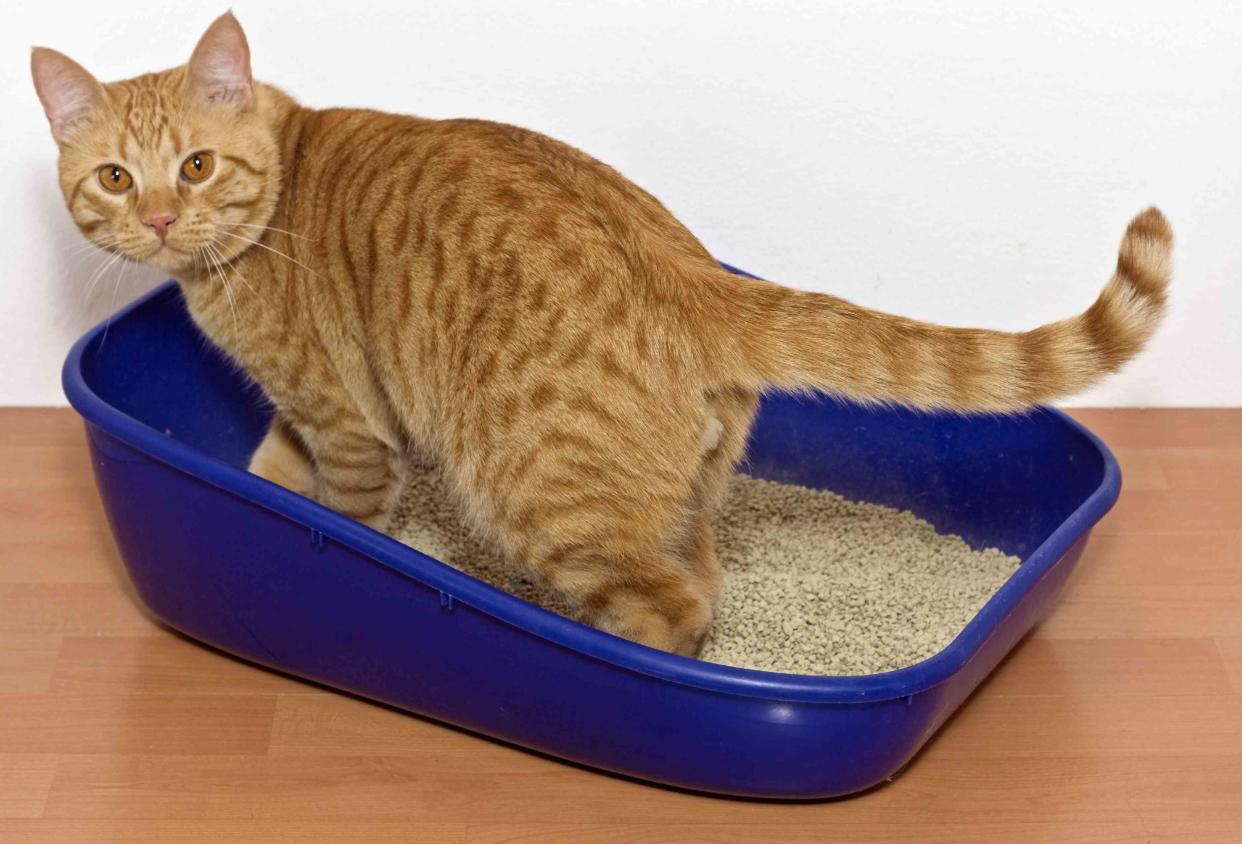Urinary Tract Infection in Cats

minoandriani/Getty Images
A urinary tract infection, or UTI, occurs in cats when disease-causing bacteria infiltrate and overcome the body’s immune defenses and then multiply within the urinary tract. This causes discomfort and inflammation in the cat’s urinary tract and can result in the cat urinating outside of the litter box in other areas of the house.
UTIs can occur anywhere along the urinary tract, from the urethra, which is the tube that passes urine out of the body, to the bladder, and even up to the kidneys. When the infection is located in the bladder, it is called bacterial cystitis. Fungi, parasites, and viruses can also cause cystitis in cats. Cats who have recently been given antibiotics tend to be more at risk of fungal cystitis, but it is still rare even in those cases. Find out more about the underlying causes of UTIs, how a diagnosis is made, and how this condition may be treated.
Causes of UTI in Cats
UTIs caused by bacteria represent only a small number of the cases where cats are diagnosed with a urinary tract disease. In young cats, UTIs are relatively uncommon. Bacterial infections are seen more often in cats over ten years old, and UTIs have been found to occur in many more cats with urinary tract disease in this age range. Female spayed cats, Persians, and Abyssinians are also at higher risk of developing UTIs.
UTIs are caused by bacteria that enter and adhere to the urinary tract, where the bacteria grow and cause disease and inflammation. In a healthy bladder, high urine flow helps to flush out bacteria and serves as one of the body’s natural defenses against infection. In cases where urine flow is slower or lower than normal (for instance, if the cat doesn’t drink much water), this can create an environment where bacteria can remain within the urinary tract and have the opportunity to multiply and adhere.
Other factors within the urinary tract that create an environment where bacterial infection can occur include changes in pH levels (a measurement of how acidic the urine is) and abnormal levels of organic acids and urea.
E. coli is the most common bacteria found in UTIs, although many other types of bacteria can cause infection as well. Often, these same bacteria reside on the skin or in the gastrointestinal tracts of cats and spread to the urinary tract when given the opportunity and an environment that promotes their growth.
Certain underlying conditions predispose cats to develop UTIs. These include chronic conditions like diabetes mellitus, kidney disease, bladder tumors, and obesity. Cats that have been given drugs to suppress their immune systems or who were born with abnormal anatomy in the urinary tract are also more likely to get UTIs. Cats who have had urinary catheters placed recently for a surgery or other medical procedure are also at higher risk of infection.
What to Do If Your Cat Has a UTI
UTI symptoms resemble other urinary tract diseases, and any time a cat shows changes in normal behavior, like suddenly urinating outside of the litter box or spending an unusually long time in the litter box, it is important to have the cat assessed by a veterinarian as soon as possible.
Treatment for UTI
If your cat is showing symptoms of a UTI, take the cat to a veterinarian; they can diagnose the condition and determine the proper treatment. Do not wait if you are seeing symptoms. Some conditions that resemble UTIs, such as a blockage of the urethra that prevents cats from being able to pass urine, can be life-threatening.
Because the symptoms of UTIs can look like other conditions that are not bacterial, it is necessary for your veterinarian to perform additional tests to make sure that antibiotics are warranted. UTIs are diagnosed based on physical examination, a history of the symptoms, and blood and urine tests. In most cases, a sample of urine from your cat will be sent to a laboratory to determine if a bacterial infection is present, and antibiotics will be selected based on the type of bacteria identified.
If a UTI is diagnosed, your veterinarian will prescribe antibiotics to treat your cat. Additional medications or supplements may also be given to increase your cat’s comfort level and overall bladder health. The veterinarian may also recommend a different diet for your cat.
If the cat has an underlying condition that is predisposing it to developing UTIs, your veterinarian will also discuss the prognosis and treatment plan for any chronic or concurrent diseases with you.

Nico De Pasquale Photography/Getty Images
How to Prevent a UTI
UTIs can occur in cats of any age or breed, but there are some actions you can take to minimize the risk of a UTI in your cat.
Practice good preventive healthcare by taking your cat in for regular veterinary check-ups.
Minimize risk factors by keeping your cat at a healthy weight.
Treat all underlying chronic health conditions, like diabetes.
Encourage water intake by offering canned food and providing water fountains that will attract your cat’s interest.
Always have fresh, clean water available to your cat.
Create an environment that is as stress-free as possible.
Have plenty of litter boxes in different locations around the house.
Clean litter boxes frequently and practice good sanitation.
There is currently no evidence showing that cranberry supplements improve bladder health in cats, and the use of these supplements is not recommended.

